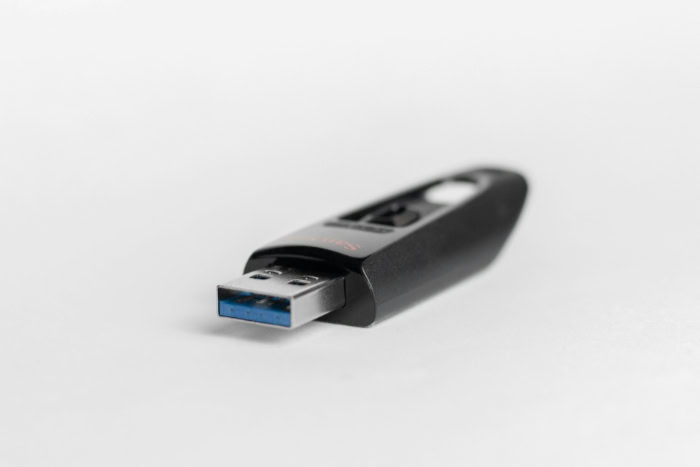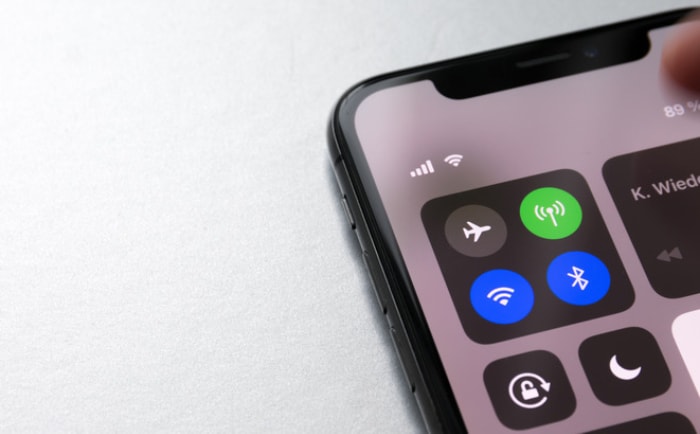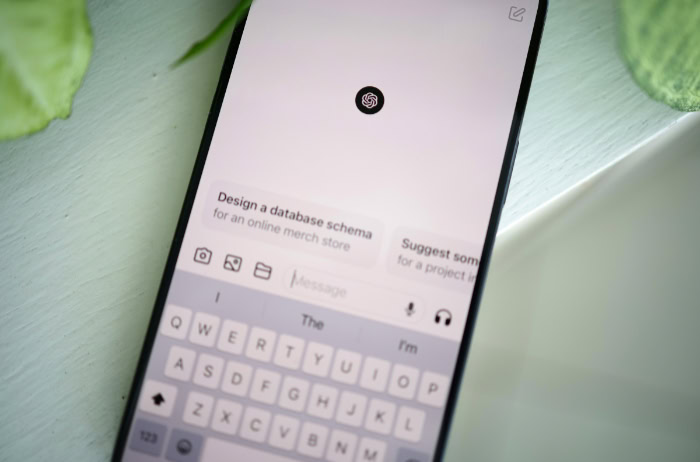How to Encrypt a USB Flash Drive: From Start to Finish

Losing a USB flash drive is frustrating; losing the sensitive data on it can be catastrophic. These pocket-sized devices carry our most important files, from personal photos and financial documents to confidential work projects.
Without protection, a simple mistake can lead to a serious data breach. Encryption offers a powerful defense, locking your files away from unauthorized access.
Choosing the Right Approach
Selecting an encryption method involves balancing security requirements, convenience, and compatibility. Your decision will depend on how you use the drive, which operating systems you need to access it from, and your specific threat model.
The three primary strategies are software-based full-drive encryption, dedicated hardware-encrypted drives, and portable file-level containers. Each offers distinct advantages and trade-offs related to cost, ease of use, and cross-platform functionality.
Software-Based Full-Drive Encryption
The most direct way to secure a USB drive is by using the encryption tools built directly into your operating system. For Windows users, BitLocker To Go provides robust, full-drive protection that integrates seamlessly with the OS.
On macOS, formatting a drive with an APFS (Encrypted) file system achieves a similar result through Finder or Disk Utility. Linux systems offer powerful and flexible encryption using LUKS (Linux Unified Key Setup).
These native tools are cost-effective because they are included with the operating system, but they can present compatibility challenges. A drive encrypted on one OS may not be readable on another without special software.
Hardware-Encrypted USB Drives
For maximum security and platform independence, a hardware-encrypted USB drive is a superior choice. These devices have encryption processors and security controls built directly into their own hardware.
Authentication often occurs before the drive even connects to the computer, typically through an onboard keypad for entering a PIN or a biometric fingerprint scanner. Because all encryption and decryption happens on the drive itself, it functions transparently on any operating system without needing special drivers.
This approach is preferred for protecting highly sensitive data or meeting strict compliance and certification requirements, though the initial cost is considerably higher than a standard drive.
Container and File-Level Encryption
A highly portable and flexible option is to create an encrypted container, which acts like a virtual safe on your drive. Software like VeraCrypt allows you to generate an encrypted file that, when mounted with the correct password, appears as a separate drive letter.
You can store your sensitive files inside this container while leaving the rest of the physical drive unencrypted for general use. This strategy provides excellent cross-platform support, as the container file can be accessed on any Windows, macOS, or Linux machine with the appropriate software installed.
It also avoids the need to reformat the entire drive, making it a practical solution for mixed-use storage.
Preparing the Drive Safely

Proper preparation is essential for a smooth and secure encryption process. Before applying any encryption, taking a few preliminary steps will prevent permanent data loss and ensure the drive functions correctly on all your intended systems.
Rushing this stage can lead to irreversible mistakes, so it is important to handle your data and device settings with care.
Creating Backups and Understanding Reversibility
The first and most critical action is to back up all data currently on the USB drive. Many encryption methods, especially those that protect the entire drive, require reformatting the device.
This process completely erases all existing contents. Copy every file to a secure location, such as your computer's hard drive or a separate external drive, and verify that the backup is complete and the files are accessible.
It is also important to know that disabling encryption is not always a simple toggle; it often requires another reformat, making your backup a long-term safeguard for your information.
Choosing a Compatible File System
The file system determines how data is organized on the drive and which operating systems can read or write to it. Selecting the right one before encrypting is crucial for usability.
For drives used across Windows, macOS, and Linux systems, exFAT is the most versatile choice, offering broad read and write compatibility. NTFS is the standard for Windows, but macOS can only read from it without additional software.
Apple's modern file system, APFS, is ideal for drives used exclusively within the Apple ecosystem and is required for some native macOS encryption methods. Your choice should align with where and how you plan to use the encrypted drive.
Creating Passwords and Recovery Keys
Your encrypted data is only as secure as the password that protects it. Create a strong and unique passphrase that is difficult for others to guess but memorable for you.
A good passphrase often consists of a long series of words mixed with numbers and symbols. During the encryption setup, you will also be prompted to save a recovery key.
This key is your only lifeline if you forget your password. It is absolutely vital to store the recovery key in a safe place completely separate from the USB drive itself, such as in a password manager or a printed copy in a secure physical location.
Losing both your password and your recovery key will result in the permanent loss of your data.
You can reformat the instructions for encrypting a USB drive using lists for better readability. Here are the step-by-step guides for Windows, macOS, and Linux.
Step-by-Step by Platform

The procedure for encrypting a USB drive varies by operating system. Each platform provides integrated tools that guide you through the process, which are detailed in the steps below.
Windows with BitLocker To Go
BitLocker To Go is the native encryption tool available in Pro, Enterprise, and Education editions of Windows. While any modern Windows version can unlock the drive, one of these versions is required to set up the encryption.
- Insert the USB drive into your computer and open File Explorer.
- Right-click on the USB drive's icon and select “Turn on BitLocker” from the context menu.
- Follow the on-screen wizard to create and confirm a strong password that will be used to unlock the drive.
- Choose a method for saving your recovery key. You can save it to your Microsoft account, save it as a file on your computer, or print it. Store this key in a secure location separate from the USB drive.
- After the encryption process completes, the drive will require your password each time it is connected to a computer.
macOS with APFS Encrypted
On macOS, encryption can be applied using either Finder or Disk Utility. It is good practice to exclude encrypted drives from Time Machine backups to avoid potential issues.
- To encrypt a drive with existing data using Finder, right-click the drive's icon on your desktop and select “Encrypt.” You will then set a password and an optional hint.
- Alternatively, to create a freshly encrypted drive using Disk Utility, open the application and select your USB drive. Click “Erase,” choose “APFS (Encrypted)” as the format, and create a password when prompted. This action will erase all data on the drive.
Linux with LUKS and cryptsetup
Linux uses the LUKS framework for robust encryption, which can be managed with graphical tools like GNOME Disks or the cryptsetup command-line utility. LUKS also allows for multiple passwords or keyfiles for a single encrypted volume.
- Open your distribution's disk management tool, such as GNOME Disks.
- Select the USB drive from the list of devices.
- Choose the option to format the drive or partition. This process will erase all existing data.
- During the format process, select an option to create a LUKS-encrypted volume and set a strong passphrase.
- Once created, your desktop environment will automatically prompt you for the passphrase each time you connect the drive.
Cross-Platform Workflows

Using an encrypted drive on more than one operating system introduces complexity that requires careful planning. Native encryption tools are often specific to their own platforms, so moving a drive between Windows, macOS, and Linux systems is not always straightforward.
To maintain access to your data across different environments, you must adopt a deliberate strategy that prioritizes either compatibility or convenience while managing security risks.
Mixed-OS Access
When you move an encrypted drive between operating systems, you will likely encounter compatibility issues. A drive encrypted with BitLocker on a Windows PC will not be natively readable on a Mac or a Linux machine.
Similarly, a drive formatted with macOS's APFS Encrypted file system will be inaccessible on Windows. To bridge these gaps, you often need third-party helper software.
Special drivers are available that allow macOS or Linux to read BitLocker volumes, and other tools can enable Windows to access Linux's LUKS-encrypted drives. However, installing such software often requires administrative privileges, which may not be an option on a work or public computer, limiting the practicality of this approach.
Adopting a Container Strategy
For maximum portability with minimal fuss, using an encrypted container is an excellent strategy. Software like VeraCrypt allows you to create a large, encrypted file that resides on your USB drive.
The drive itself can be formatted with a universally compatible file system like exFAT. When you need to access your secure files, you use the VeraCrypt application on any Windows, macOS, or Linux computer to mount the container file with your password.
Once mounted, it appears as a normal drive where you can store and retrieve your sensitive data. This method keeps your secure files portable without needing to reformat the entire drive or install system-level drivers.
A simpler alternative is to use encrypted archives, like password-protected ZIP or 7z files, for individual folders.
Using Trusted Machine Settings
Some encryption systems offer features that allow an encrypted drive to automatically unlock on specific computers you designate as trusted. On your personal, secure laptop, for instance, this feature can save you the effort of typing your password every time you connect the drive.
While convenient, enabling auto-unlock introduces risk if not managed carefully. You should only use this setting on computers that are under your complete control and are physically and digitally secure.
Activating auto-unlock on a shared family computer, a public terminal, or an unmanaged workstation could expose your data if that machine becomes compromised. On any system you do not fully trust, you should always unlock the drive by manually entering your password.
Security, Compliance, and Performance

Beyond the initial setup, using an encrypted drive involves ongoing considerations for security, performance, and maintenance. Implementing encryption is not just about choosing a tool; it is about adopting practices that ensure your data remains protected, accessible to you, and compliant with any relevant policies over the long term.
Threat Models and Policies
Your choice of encryption method should directly align with your specific security needs and any external requirements. A threat model helps you define what you are protecting against; for example, are you guarding against the casual finder of a lost drive, or a determined adversary attempting to bypass security? For personal files, software-based encryption is often sufficient.
However, if the data is subject to regulations like HIPAA or GDPR, you may be required to use certified hardware-encrypted drives that provide tamper resistance and can pass an audit. Corporate policies may also dictate a specific encryption standard, so it is important to select a solution that meets those compliance demands.
Performance and Reliability
Encrypting data introduces a small performance overhead because your computer's processor must encrypt and decrypt files as they are written and read. On modern computers, this impact is often minimal for everyday tasks but may become noticeable when transferring very large files or many small ones.
Reliability depends heavily on proper handling. You must always use the “Safely Remove Hardware” or “Eject” function before unplugging the drive.
Abruptly removing it can interrupt a write process and lead to data corruption or damage to the encrypted volume. It is also wise to remember that flash drives have a limited lifespan and can fail over time.
Regular backups become even more critical when dealing with an encrypted drive, as recovering data from a failed encrypted device is significantly more difficult.
Maintenance and Recovery
Maintaining an encrypted drive is an active responsibility. You should periodically test your ability to unlock the drive to ensure your password and the drive itself are still working correctly.
This habit prevents discovering a problem only when you urgently need the data. Your data backup strategy should include regular rotation to keep your backups current.
Just as importantly, you should occasionally verify that you know where your recovery key is and that it is accessible. Having a clear incident response plan is also a good practice.
Decide in advance what steps you will take if the drive is lost, stolen, or becomes inaccessible, including how you will restore your data from a backup and secure any accounts that may have been compromised.
Conclusion
Securing a USB drive is a process of making deliberate choices. It begins with selecting the appropriate method, from native software tools and dedicated hardware drives to portable containers.
Success depends on careful preparation, including backing up data and choosing a compatible file system. Executing the encryption on your specific platform, be it Windows, macOS, or Linux, requires following distinct steps but leads to a robustly protected device.
Finally, maintaining security is an ongoing activity that involves disciplined habits like safe removal and regular checks of your backups and recovery keys. Properly implemented, encryption transforms a vulnerable device into a secure vault, offering durable protection for your sensitive information with only minor adjustments to your daily workflow.


